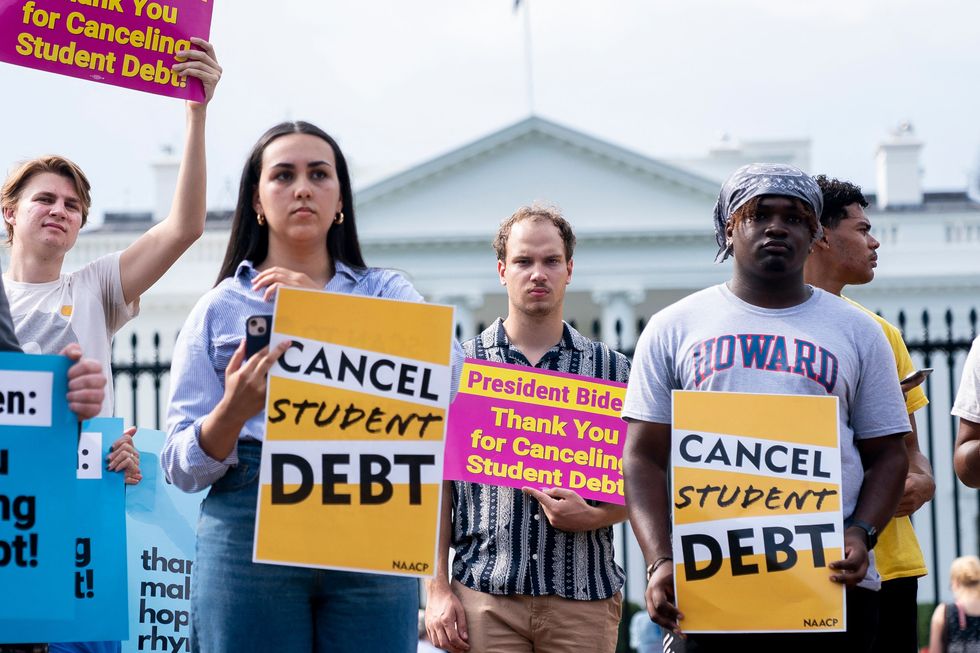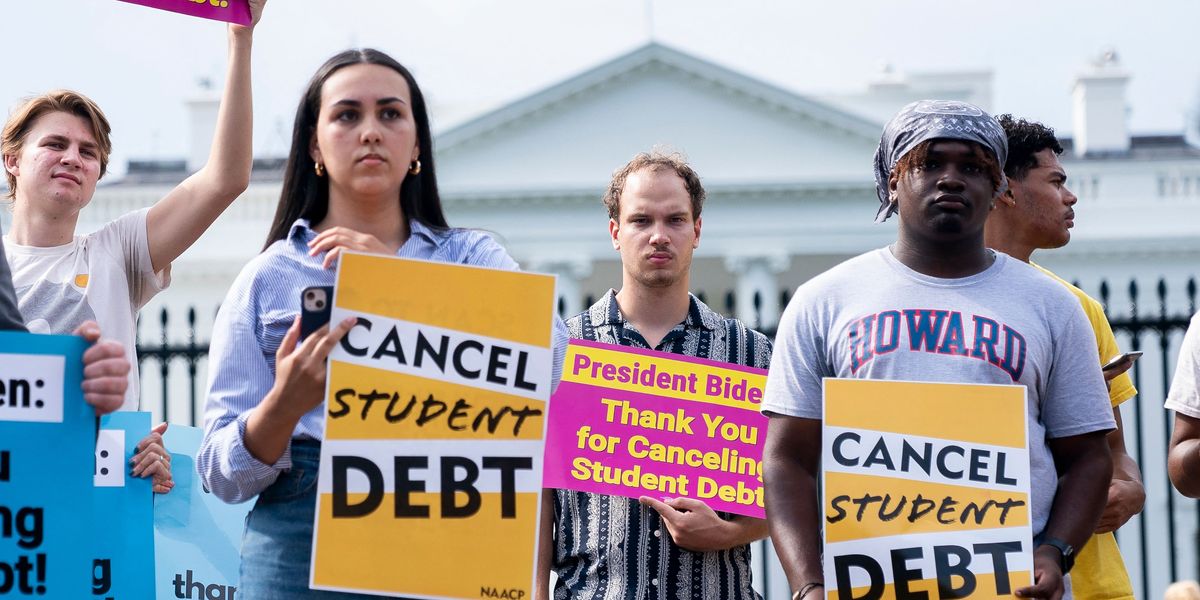
Striking down President Joe Biden’s student debt relief plan would have devastating impacts on millions of borrowers, advocacy groups warned in a report released Monday, one day before the U.S. Supreme Court is set to hear oral arguments over the White House’s cancellation bid.
“Denying student debt cancellation would cause financial disaster for millions of Americans,” says the report, which was assembled after Sen. Elizabeth Warren(D-Mass.) asked the Debt Collective, NAACP, and more than a dozen other organizations last month to explain how upholding or rejecting Biden’s plan would affect borrowers.
“Reducing debt burdens through cancellation will help avoid defaults when student loan payments resume and ensure borrowers do not face financial ruin as the economy continues its recovery from the Covid-19 pandemic,” according to the report, which was provided exclusively to Insider. This would disproportionately benefit low-income households.
However, “if the Supreme Court sides with the extremist judges, millions of Americans’ monthly costs will rise significantly when student loan payments resume later this year,” the report cautions.
“I’m putting all of my hope into this process finally getting approval. I haven’t allowed myself to imagine another scenario because I may not continue even trying to exist everyday if that happens.”
Although Biden ignored progressives’ demands for universal student debt cancellation, his administration in August announced several relief measures, including a move to wipe out up to $10,000 in debt for federal borrowers with individual incomes under $125,000—and up to $20,000 for Pell Grant recipients—as well as proposed changes to the income-driven repayment program.
Republican lawmakers and right-wing activists responded with a barrage of lawsuits. Applications for relief opened in October but closed a month later after a federal judge appointed by former President Donald Trump blocked Biden’s plan, deeming it “unlawful” on legal grounds criticized by experts as dubious. At the time, 26 million borrowers had already applied for or were automatically eligible for relief, and 16 million applications were fully approved and sent to loan servicers.
With his relief initiative on hold, Biden extended the moratorium on federal student loan repayments—a policy that was first implemented at the start of the Covid-19 pandemic in March 2020 and had been set to expire on December 31, 2022—through June 30, 2023. Payments are set to resume 60 days after that date, or 60 days after the Supreme Court hands down its decision, whichever comes first.
The nation’s chief judicial body agreed in December to hear oral arguments in two student loan-related cases on Tuesday.
In both Biden v. Nebraska—brought by the GOP-led states of Nebraska, Missouri, Arkansas, Iowa, Kansas, and South Carolina—and Department of Education v. Brown—brought by two plaintiffs who claim they were unfairly excluded from relief—the right-wing-dominated high court will decide whether Biden’s plan exceeds the U.S. Department of Education’s (DOE) authority and whether the lawsuits have legal standing.
As TIME explained:
Six Republican-led states filed Biden v. Nebraska, arguing that in addition to the administration overreach, the program would cause states to lose tax revenue as a result of debt cancellation. U.S. District Judge Henry Autrey initially dismissed the case saying that it lacked legal standing. The Eighth Circuit Court of Appeals, however, later decided that Missouri had legal standing because a loan servicer in the state would lose substantial revenue.
Department of Education v. Brownwas filed by Alexander Taylor and Myra Brown. Brown is not eligible for any relief, and Taylor is only eligible for $10,000 (rather than the up to $20,000 given to Pell Grant recipients). They also argue that the administration did not go through the Administrative Procedure Act’s notice-and-comment procedure, which requires agencies to notify the public of their proposal and take comments.
Biden’s student loan forgiveness plan is contingent on the Higher Education Relief Opportunities for Students (HEROES) Act of 2003, which allows the Department of Education to modify student financial assistance programs in response to national emergencies to alleviate borrowers’ financial hardship. Former President Donald Trump used the act for the student loan moratorium, which began during the pandemic and is still in place for the next few months. Programs implemented under the HEROES Act are exempt from the notice-and-comment period, but plaintiffs in the Department of Education v. Brown case say that the Education Department does not have the authority to act under this law.
The Debt Collective tweeted Monday that Taylor and Brown “are just political pawns for billionaire-funded groups—they’re not actually harmed by people getting debt relief.”
In a recent video, More Perfect Union detailed how the plaintiffs’ lawsuit is being backed by “a shady network of conservative billionaires trying to keep you in debt.”
An unnamed White House official previously toldTIME that “our debt relief plan is needed to prevent defaults and delinquencies as student borrowers transition back to repayment after the end of the payment pause.”
“There was a national emergency that impacted millions of student borrowers,” said the official. “Many of those borrowers still face risk of default on their student loans due to that emergency. Congress gave the Secretary of Education the authority under the HEROES Act to take steps to prevent that harm, and he is.”
Those who responded to Warren’s inquiry echoed the Biden administration’s warnings about the harmful economic consequences of a ruling against student debt relief, which would likely come in late June or early July.
One member of the Debt Collective said: “I’m putting all of my hope into this process finally getting approval. I haven’t allowed myself to imagine another scenario because I may not continue even trying to exist everyday if that happens. This debt follows me daily.”
While GOP lawmakers contend that student debt relief is a regressive policy whose benefits would flow disproportionately to high-income households, DOE data released earlier this month debunks such arguments. According to a Politicoanalysis of the data, over 98% of people who applied before the portal was shut down live in ZIP codes where the average per-capita income is under $75,000. Nearly two-thirds of applicants reside in neighborhoods where the average person makes less than $40,000 per year.
As Common Dreamsreported last week, supporters of Biden’s stalled relief proposal plan to rally outside the Supreme Court on Tuesday.




